In Pictures: The Best Graphics Card Values In History
You Don't Have To Be The Fastest To Be Great

In August, we published a list of the 23 Greatest Graphics Cards Of All Time. While our readers generally enjoyed the trip down memory lane, some folks took offense at the title. The term "greatest" can mean a lot of things, and not everyone links it to the fastest hardware. While the flagships are always fun to look back on, more of us actually owned the budget-oriented options. Aren't the lower-priced cards that made great performance available to the masses just as deserving of honor and respect?
Indeed they are! Frankly, it was always our intention to follow up with a list of the greatest values in graphics technology, represented by models that enabled impressive performance for less than $200.
Now, let us pay our respects to these reasonably-priced trench fighters, arranged chronologically, of course.
GeForce 2 MX

Picking the first candidate was difficult, but we had to start somewhere. We considered a number of older cards like the Voodoo2 3000 and TNT2 M64. But to us, the GeForce 2 MX is the card that created the mid-range performance market with a derivative architecture and correspondingly lower price.
A few months after the turn of the millennium, Nvidia released this now-infamous budget board. Built on the 0.18 micron process, running at 175 MHz, and complemented by 166 MHz memory, the GeForce 2 MX featured two pixel pipelines instead of the GeForce 256's four. However, each one could handle two times the number of textures per clock. As a result, performance was close to the original GeForce 256, in some games, despite the GeForce 2 MX's $120 MSRP.
Though those specs certainly don't sound impressive today, the product was actually a modest gaming board back in its day. Savvy buyers hunted down models with 128-bit memory interfaces, and took advantage of an overclockable core to approach the results achieved by higher-end hardware. The GeForce 2 MX ushered in an era of more accessible 3D graphics, and it remained a minimum recommendation of many titles for years after its introduction.
Kyro II
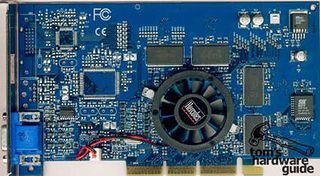
STMicroelectronics was a player in the graphics card market in 2001, and early that year, the Kyro II, based on PowerVR's Series 3 chipset, was introduced. Its STG 4500 GPU was etched on a 0.18 micron process with two pixel pipelines, synchronous 175 MHz core and memory clocks, and a 128-bit memory interface.
Stay on the Cutting Edge
Join the experts who read Tom's Hardware for the inside track on enthusiast PC tech news — and have for over 25 years. We'll send breaking news and in-depth reviews of CPUs, GPUs, AI, maker hardware and more straight to your inbox.
Although low-resolution performance was lackluster, as the number of pixels displayed on-screen increased, the bandwidth-saving benefits of tile-based rendering came into play, and the $150 Kyro II was able to challenge high-end graphics cards priced twice as high. Unfortunately, without hardware-accelerated transform and lighting or pixel shading support, the Kyro II was made obsolete by DirectX 8-class hardware like the GeForce 3 and Radeon 8500. Nevertheless, this card represented tremendous value in its day.
GeForce 3 Ti 200
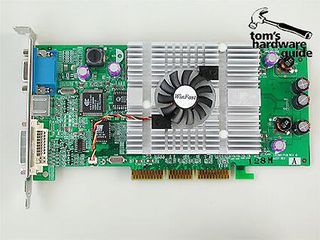
At the end of 2001, while the GeForce 3 Ti 500 was getting all of the glory, the GeForce 3 Ti 200 offered the same four-pipeline DirectX 8-capable GPU with 175 MHz core and 200 MHz memory clocks (only 25 and 30 MHz lower than the original GeForce 3, respectively). With a $200 launch price, this card trounced the similarly-priced Radeon 7500 and even performed on par with the more expensive Radeon 8500.
While the Radeon 8500 offered impressive hardware, its driver problems hindered the card and prevented it from reaching its potential. The down-clocked Radeon 8500LE was priced a bit closer to the Ti 200 and performed well overclocked, but the GeForce Ti 200 remained a better bet for reliable performance.
GeForce 4 Ti 4200
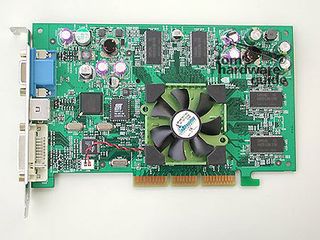
Nvidia's next-generation GPU powered the GeForce 4 Ti series, released in early 2002. The only difference between the $300+ flagship GeForce 4 Ti 4600 and $200 GeForce 4 Ti 4200 was clock rates: its 250 MHz core/222 MHz DDR memory clocks were 50 and 103 MHz lower.
Having said that, the GeForce 4 Ti 4200 could be overclocked to excellent effect. Given a 0.15 micron GPU with four pixel pipelines and raw specifications that appeared quite similar to the GeForce 3 line, Nvidia's 4000-series cards actually did feature a host of improvements and optimizations that pushed performance a lot further in many applications. The Radeon 8500 was left in the dust, and ATI wasn't able to provide a viable alternative until the Radeon 9000 series emerged.
Radeon 9500 Pro And 9600 Pro
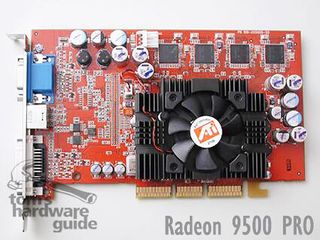
ATI's Radeon 9700 Pro might have given the company the graphics card performance crown, but its high-end price didn't win away any real market share. That didn't happen until the Radeon 9500 Pro showed up in late 2002 to contend with Nvidia's GeForce Ti 4200.
With the same eight-pipeline, 0.15 micron R300 GPU as the Radeon 9700 Pro, the Radeon 9500 Pro offered incredible DirectX 9-class performance for under $200. Its 275 MHz core and 270 MHz memory clocks were each only 50 and 35 MHz short of the flagship product. But the real differentiator was a 128-bit memory interface, half of 9700's 256-bit bus. Despite what would seem like a debilitating handicap, the Radeon 9500 Pro soundly beat the GeForce Ti 4200, and ATI's card quickly gained a strong reputation.
Interesting tidbit: early versions of the 9500 Pro could, in fact, be modified into 256-bit cards by soldering a bridge onto the PCB, providing 9700-class performance when overclocked.
While the Radeon 9500 Pro was a great success, it was relatively expensive to produce. The Radeon 9600 Pro came out in early 2003, designed to be cheaper to manufacture and provide comparable performance. Although it had half of the 9500 Pro's pixel pipelines, a newer 0.13 micron process facilitated a much higher 400 MHz core clock. Combined with faster 300 MHz memory, the 9600 Pro often outperformed its predecessor. The card could also be overclocked, and it remained a great budget option for quite a while after its introduction.
GeForce 6600 GT
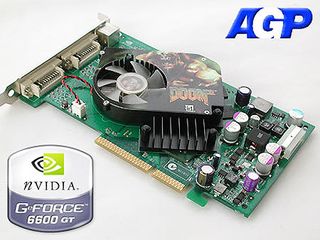
Nvidia regained the pole position with its GeForce 6800 Ultra, but the company didn't have a solid mid-range contender until the fall of 2004, when its GeForce 6600 GT was introduced. More impressive than the card's specifications, which included Shader Model 3.0 support, was its price/performance ratio.
Although the board sported a 128-bit memory interface, the GeForce 6600 GT was built on the 0.11 micron process, allowing for a 500 MHz core clock. Fast 500 MHz DDR memory allowed the 6600 GT to compete with AMD's previous flagship, the Radeon 9800 XT, but at $200 price point. Nvidia's mainstream stunner embarrassed similarly-priced competition like the Radeon X600 XT. ATI countered with its Radeon X700 XT by the end of the year, but it couldn't quite usurp Nvidia's GeForce 6600 GT. To make matters worse, the X700 XT practically turned out to be vaporware; only the lower-clocked Radeon X700 Pro saw any traction in the marketplace.
The GeForce 6600 GT also made SLI available to mid-range buyers. Thanks to price reductions over time, this card remained a viable gaming platform long after it was introduced.
Radeon X800 GTO
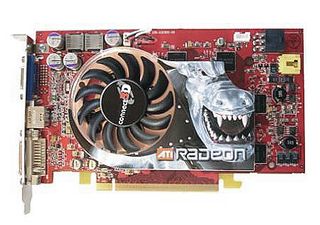
In the fall of 2005, ATI decided to do something novel with extra GPUs left over from Radeon X800, X800 Pro, and X850 Pro boards. The company created a new budget model that could carry them all. The Radeon X800 GTO, as it was dubbed, had 12 pixel pipelines, a 400 MHz core clock, and a 256-bit memory bus. Versions with 128 MB of RAM had 350 MHz memory clocks, but the 256 MB models sported more impressive 490 MHz memory frequencies. And because the X800 GTO was put together with GPUs from premium models, some cards could be flashed with a firmware, creating full Radeon X800 Pro and X850 Pro cards.
At its ~$180 launch price, the card was formidable. But because it was a home for overstocked GPUs, prices on the card dropped to ridiculously low levels over time. Later in its product cycle, the Radeon X800 GTO was the first contemporary card with a 256-bit memory bus available under the $100 mark.
GeForce 7600 GT

The GeForce 6600 GT offered performance competitive with previous-gen flagships, and Nvidia managed to achieve the same thing with its GeForce 7600 GT. Introduced in early 2006, this mainstream-oriented board launched with benchmark results comparable to the GeForce 6800 Ultra and Radeon X850 XT for as little as $140.
Built using a 90 nm process, the 7600 GT GPU featured 12 pipelines, a 560 MHz core and 700 MHz DDR memory on a 128-bit bus. The GeForce 7600 GT easily outmaneuvered the competing Radeon X1600 XT. ATI fired back with its X1650 XT late in the same year, but it could only achieve parity with Nvidia's product, rather than pass it. As time went by, that ATI card faded into obscurity, but the GeForce 7600 GT went on to deliver modest value, especially after price reductions.
Radeon X1950 Pro
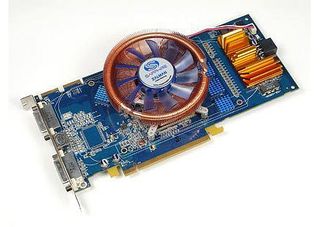
While ATI wasn't able to catch the GeForce 7600 GT in 2006, at the end of that year, it did manage to create a product that recaptured the sub-$200 graphics card market: the Radeon X1950 Pro.
Radeon X1900 GT already covered that space, but it was essentially a X1900 XT with a crippled R580 core. Consequently, the Radeon X1900 GT was very expensive to produce. ATI created the 90 nm R570 GPU specifically for the Radeon X1950 Pro: smaller, more efficient, and cost-effective.
The resulting 36-shader GPU, running at 575 MHz and complemented by 690 MHz memory on a 256-bit interface, was more affordable to manufacture, pushing prices under the magic $200 mark. It beat out the GeForce 7900 GS and GT for less money, remaining successful thanks to falling prices over time.
GeForce 8600 GT/GTS
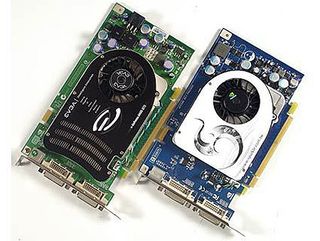
When they launched in early 2007, the GeForce 8600 GT and GTS were grossly overpriced compared to previous-gen products, barely offering any performance advantage over the GeForce 7600 GT. Priced between $150 to $200, these new cards were bested by the Radeon X1950 Pro and GeForce 7900 GS. So, why are they on our list?
The introduction of AMD's Radeon HD 2600 XT started a price war that pushed the GeForce 8600s down below $100, providing a number of interesting budget-oriented options. Both boards shared the same 80 nm GPU armed with 32 stream processors and equipped with a 128-bit memory interface. Frequencies differentiated the GT and GTS models, with the 8600 GT sporting a 540 MHz core and 700 MHz memory, while the faster 8600 GTS model boasted a 675 MHz core and 1000 MHz memory.
-
dragonsqrrl Great article. I still have my GeForce 3 Ti 200 (fan died a while ago though), and I'm still running a GTS 250 in my backup system. Both were excellent values.Reply -
we_san just my thought. how about voodoo banshee ? against voodoo2+you must have/buy a 2d card.Reply
-
michalmierzwa Epic, I loved this article. I get emotionally attached to my GPU's as my childhood dreams were based on moving away from playing software rendering Quake 2 to OpenGL. That was my 1st step. Than came Quake 3 and oh boy my dreams come true when a budget card did the trick :-))) Amazing!Reply -
joytech22 Thanks for the compilation.Reply
I enjoyed seeing my first dedicated GPU (7600GT) in there, I was like.. 12 when I got my very first desktop (that I could call my own) and the 7600GT was the card I decided to put into it.
Ah the memories.. (Even though it wasn't long ago -.-) -
Achoo22 The author is too young and unqualified to write such an article - I'm pretty sure there were some crucially important budget CGA/etc cards back in the 80s without which home computing for entertainment purposes would've never caught on.Reply
Once upon a time, pretty much every version of BASIC was specific to a particular video card - much like all PC games before VGA/UNIVBE/Direct X. As a result, you can argue pretty strongly that the cards back then were much more important, historically, than anything on this meager and ill-conceived list. Even if the focus was explicitly on modern cards, the choices were poor. We are not impressed. -
hardcore_gamer I built my first gaming PC with a 6600GT when I was 14. I remember playing HL2, UT2004, farcry,Doom3 etc..Good old days :DReply -
theuniquegamer My first was TNT 2 then 6600 then 8800gt and 4670 and now i will upgrade to 7000 or 700 seriesReply
Most Popular


